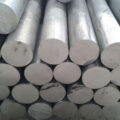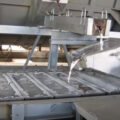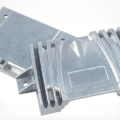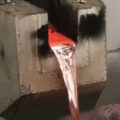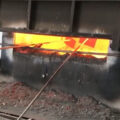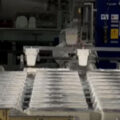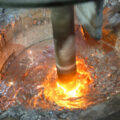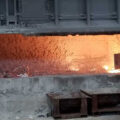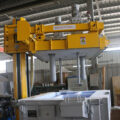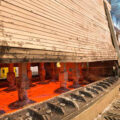Bubbles of different sizes often appear on the surface of aluminum alloy die castings, especially on thin-walled cover products. What is the reason? How to prevent and solve bubbles on aluminum, let’s make a brief analysis.
The bubbles on the surface of the die-casting parts often appear on the end of the product far away from the inner gate. Sometimes there are bubbles after the heat treatment of the casting. Some bubbles have black impurities inside after sawing, and some are gas.
The characteristics of bubbles are: the surface of the casting has a bulge the size of a rice grain, and a cavity is formed under the epidermis. After shot blasting or sandblasting, it will appear loose or concave.
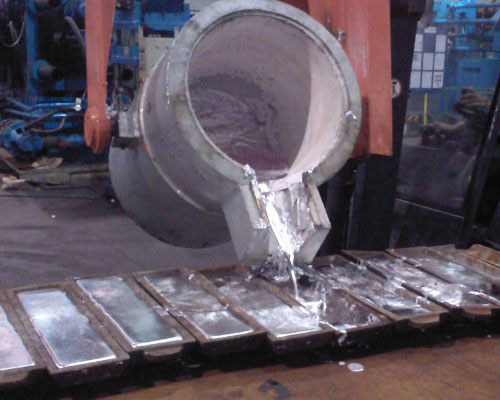
How to prevent and solve bubbles on aluminum, the following analysis was carried out:
Human factor
① Is the release agent sprayed too much? Because the release agent has a large amount of gas, if the amount is too large, it will not burn out before pouring, so that the volatile gas will be covered on the surface of the casting, so under the same conditions, some workers will produce One of the reasons for the more pores is to choose a release agent with a small amount of air, and the amount is thin and uniform, and the mold is closed after burning;
②The overflow groove and exhaust duct are not cleaned frequently;
③Is the mold opening too early;
④No The mold is preheated, and whether each part is heated up slowly and evenly, so that the surface temperature of the cavity and core is 180℃~260℃;
⑤If there is no preheating device, whether the aluminum alloy material is slowly pushed into the cavity to preheat Or use other methods to heat;
⑥Whether the clean aluminum liquid is taken, and whether the oxide layer is injected into the press chamber;
⑦As soon as the molten metal is poured into the press chamber, whether the injection is carried out and the temperature is reduced;
⑧Cooling and mold opening, Whether to choose the mold opening time according to different products;
⑨ Whether the operator strictly abides by the die-casting process;
⑩ Whether to use quantitative pouring and how to determine the pouring amount.
Factors in die-casting mold
①Is the gate position and guide shape improper, causing the molten metal to enter the cavity and produce frontal impact and vortex (reducing the injection speed to avoid vortex entrapment);
②Whether the runner shape is designed Bad;
③Is the launder gate speed too high, causing turbulence;
④Whether the exhaust is not smooth;
⑤Whether the punch has too much lubricant or is scorched, which is also one of the sources of gas;
⑥Exhaust duct position wrong, resulting in poor exhaust conditions;
⑦ Whether the area of the overflow channel is large enough, whether it is blocked, whether the position is located at the last filling place, whether the exhaust part of the mold is cleaned frequently, to avoid losing the exhaust effect due to the blockage of the release agent;
⑧ Whether the mold temperature is too low;
⑨Is there any part that is difficult to exhaust due to the unreasonable die-casting design;
⑩Whether the total cross-sectional area of the overflow port is less than 60% of the total cross-sectional area of the inner gate, and the slag removal effect is poor.
Refers to die-casting parameters and operating technology:
① Whether to select the process parameters according to different products (casting aluminum liquid temperature 630-670ºC), reasonably select the die-casting process parameters, especially the injection speed, adjust the high-speed switching starting point;
② Whether to reduce demoulding water content of the agent, whether a release agent with a small gas volume is used;
③whether the alloy melting temperature is too high;
④how to determine the temperature of the molten aluminum, and whether the thermometer is accurate;
⑤whether the injection speed and slow injection speed are adjusted in time according to the product The conversion point of fast injection speed;
⑥ Whether there is a large machine to die-cast small parts, the pressure chamber is too small. Through production practice and summary, it is believed that the reasons for the formation of bubbles are roughly as follows: ① The molten metal is too low in the pressure chamber, which is easy to produce entrainment, and the slow injection speed is too high; ②The mold exhaust is poor; Degassing and smelting temperature is too high; ④The mold temperature is too high, the metal solidification time is not enough, the strength is not enough, and the mold is opened too early to eject the casting, and the pressurized gas expands; ⑤Excessive amount of release agent and punch oil; ⑥Inside Poor opening of the runner, transfer of the filling direction, formation of eddy current, resulting in entrainment; ⑦The blowing time after spraying is too short, and the water on the mold surface is not dried.
Solution to bubble generation
Based on the above reasons, it is possible to:
① change the diameter of the small pressure chamber to increase the fullness of molten metal;
② extend the injection time, reduce the injection speed in the first stage, change the switching point between low-speed and high-speed injection;
③ reduce the mold temperature to maintain thermal balance;
④Add exhaust troughs and overflow troughs to fully exhaust and remove oil and waste on the exhaust trough in time;
⑤Adjust the smelting process and conduct degassing treatment;
⑥Prolong the mold retention time appropriately;
⑦Reduce the amount of release agent.

